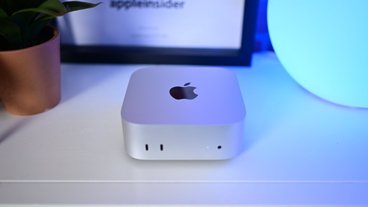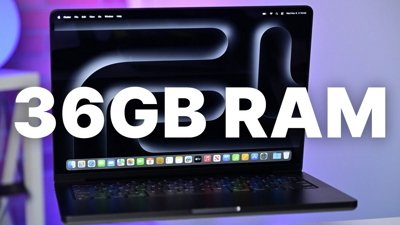Hidden among the many announcements at the Consumer Electronics Show in Las Vegas is a new PowerVR mobile graphics chip that could power advanced 3D, HD video and even general computing on an eventual generation of iPhones.
The silicon is the company's fifth generation of graphics accelerators for cellphones and other handhelds and contains a much more efficient instruction set with particular optimizations for rendering graphics shaders, or the visual effects that apply to pixels onscreen and geometry in 3D views. Imagination reckons that its new technology is about 40 percent faster for "shader-heavy" software and can push as many as 50 percent more triangles when handling 3D.
In practice, the technology is powerful enough to push 35 million polygons per second and 1 billion pixels per second and can thus easily drive HD resolution video output, including when 3D is involved.
Moreover, the new SGX chip is very efficient and very scalable, according to the company. That same performance is achievable at a clock speed of just 200MHz, making it relatively power-efficient, but can be improved further still with new multi-core support that would let a device maker join two or more cores together to ramp up the speed in the devices with the physical space and battery power to use the hardware.
But the most important aspect of the PowerVR chip may be the universal nature of its processor. The GPU is capable of handling Apple's now open and virtually finished OpenCL standard for speeding up general computing and letting it move to non-CPU technology such as graphics chips, even on mobile devices.
Imagination has lately been hiring OpenCL engineers to ensure its hardware supports the compute standard.
As of the present, it's unknown whether or not the OpenCL move is being made with Apple's iPhone and iPod touch in mind; the existing iPhone has used an older PowerVR MBX core for its graphics in two generations and isn't currently known to be making the leap to SGX. However, Apple is now a major PowerVR licensee and has boosted the number of shares it holds in Britain-based Imagination, all but committing iPhones to using future PowerVR advancements.
SGX543's inventor pledges to provide more information about the product at the Multicore Expo in March.
 Katie Marsal
Katie Marsal













 AppleInsider Staff
AppleInsider Staff
 Christine McKee
Christine McKee





 William Gallagher
William Gallagher









22 Comments
It's going to go nicely with the Quad Core ARM Cortex MPA9
That's it! I'm not shaving till I get this in my next iPhone.
Another slightly misleading post from AI.. This may be nitpicking to some, but this post makes it appear that the PowerVR "SGX" line of graphics processors was just announced.
In fact, the only thing that was newly announced at this CES was the specific "SGX543" unit. The PowerVR "SGX" line has been known about for a few years and has just recently (finally!) been integrated into system-on-a-chip platforms from T.I., Qualcomm, etc. It was actually demo'd at the ARM tradeshow in 2006. Unfortunately, unlike the PC market, the embedded moves slow in getting new stuff to market. The ARM Cortex-A8, which will most likely find it's way into the new iPhone, was also licensed since 2006.
That's it! I'm not shaving till I get this in my next iPhone.
I still don't believe we'll see the fruits of OpenCL and the real reasons for Apple's investment in the company until the 2010 iPhone. This year's new iPhones (maybe new form factor) may have new processors but it just seems to quick that they'd get the OpenCL benefit.
Unfortunately, unlike the PC market, the embedded moves slow in getting new stuff to market. The ARM Cortex-A8, which will most likely find it's way into the new iPhone, was also licensed since 2006.
Well, the Palm Pre has an ARM Cortex A8 as well as a PowerVR accelerator.
Anyways, having worked for several years in the smart phone development industry and with those SOCs, I believe that people seriously underestimate the amount of work that goes into getting new platforms like the iPhone or the Palm Pre up and running, both HW and SW. It is absolutely mind boggling how complex those devices are under the hood and to make everything work smoothly and without glitches is a herculean task.